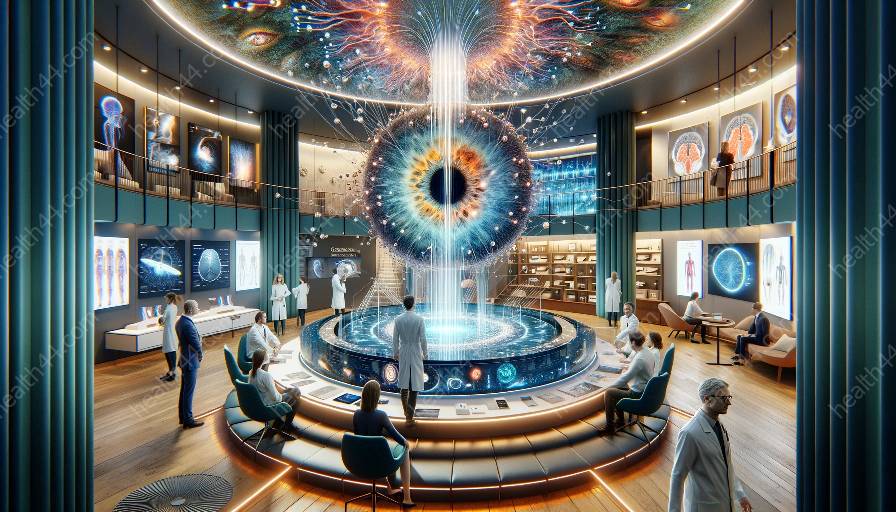Visual perception plays a critical role in the performance of daily living tasks for individuals with visual impairments. Understanding the impact of visual perception and the role of vision rehabilitation is crucial in enhancing their abilities. This article explores the relationship between visual perception and the ability to carry out daily tasks, as well as the importance of vision rehabilitation in improving overall quality of life.
Understanding Visual Perception
Visual perception refers to the brain’s ability to interpret and make sense of visual information received through the eyes. It involves the processing of visual stimuli, recognition of objects, depth perception, and spatial awareness. Individuals with visual impairments often face challenges in perceiving and interpreting visual cues, which can significantly affect their ability to perform daily living tasks.
Impact on Daily Living Tasks
Visual perception directly impacts various daily living tasks such as cooking, navigating the environment, reading, and recognizing faces. The inability to accurately perceive visual information can lead to difficulties in performing these tasks independently and safely. Tasks that rely heavily on visual cues, such as cooking and navigating unfamiliar environments, can be particularly challenging for individuals with visual impairments.
Cooking and Meal Preparation
Visual perception is crucial in tasks related to cooking and meal preparation, such as measuring ingredients, reading recipes, and monitoring cooking progress. Individuals with visual impairments may struggle to accurately measure ingredients, follow recipes, or determine the doneness of food due to their limited visual perception.
Navigation and Orientation
Mobility and orientation in various settings heavily rely on visual perception. Individuals with visual impairments often face challenges in navigating unfamiliar environments, recognizing landmarks, and safely maneuvering through crowded spaces. These difficulties can impact their independence and overall quality of life.
Reading and Communication
Visual perception also affects tasks related to reading and communication. The ability to recognize and interpret written text, facial expressions, and non-verbal cues is essential for effective communication. Individuals with visual impairments may experience limitations in reading printed material, accessing digital content, and understanding visual social cues.
Vision Rehabilitation
Vision rehabilitation encompasses a range of services and interventions designed to enhance the functional abilities of individuals with visual impairments. It aims to maximize their remaining vision, develop alternative strategies, and promote independence in daily living tasks.
Role of Vision Rehabilitation
Vision rehabilitation plays a crucial role in addressing the impact of visual perception on daily living tasks for individuals with visual impairments. It includes the following key components:
- Low Vision Assessment: Comprehensive evaluation of visual function and residual vision to determine specific challenges and develop tailored interventions.
- Visual Skills Training: Rehabilitation professionals work with individuals to improve specific visual skills, such as contrast sensitivity, visual scanning, and reading abilities through specialized training programs.
- Assistive Technology: Utilization of specialized optical and non-optical devices, such as magnifiers, electronic readers, and screen-reading software, to enhance access to printed material and digital content.
- Orientation and Mobility Training: Instruction on safe and independent navigation, spatial awareness, and mobility techniques in various environments using tactile and auditory cues.
- Adaptive Strategies: Development of alternative techniques and adaptive strategies to perform daily tasks, including tactile markers, labeling systems, and organizational skills.
- Psychosocial Support: Provision of emotional support, counseling, and coping strategies to address the psychological and social impact of visual impairment.
Enhancing Performance in Daily Living Tasks
Through the implementation of vision rehabilitation, individuals with visual impairments can enhance their performance in daily living tasks. By improving their visual skills, utilizing assistive technology, and learning adaptive strategies, they can overcome many of the challenges associated with visual perception limitations.
Improving Quality of Life
By addressing the impact of visual perception and providing comprehensive vision rehabilitation services, individuals with visual impairments can improve their overall quality of life. Enhanced independence, improved access to information and communication, and greater confidence in performing tasks contribute to a more fulfilling and inclusive lifestyle.
Conclusion
Visual perception significantly influences the performance of daily living tasks for individuals with visual impairments. The integration of vision rehabilitation services is essential in addressing the challenges associated with limited visual perception and enhancing functional abilities. By understanding the impact of visual perception and embracing tailored interventions, individuals with visual impairments can achieve greater independence and an improved quality of life.





















